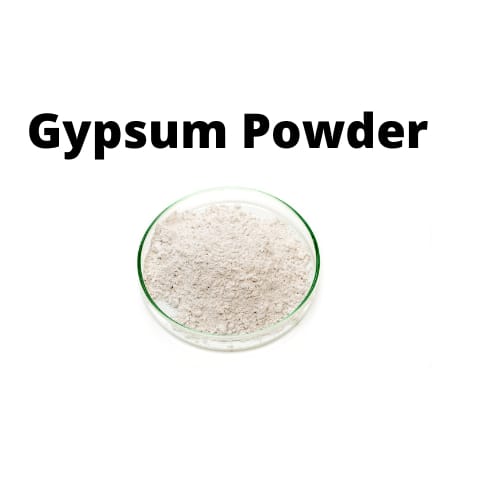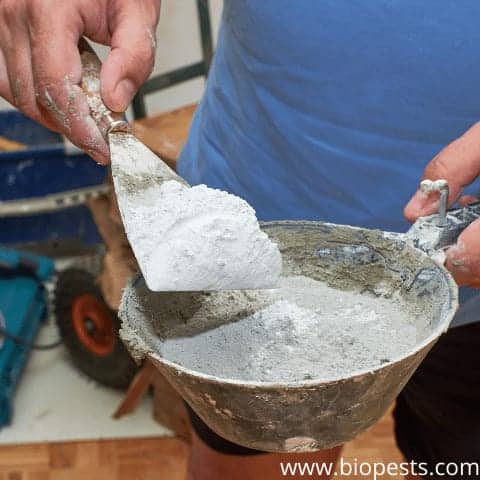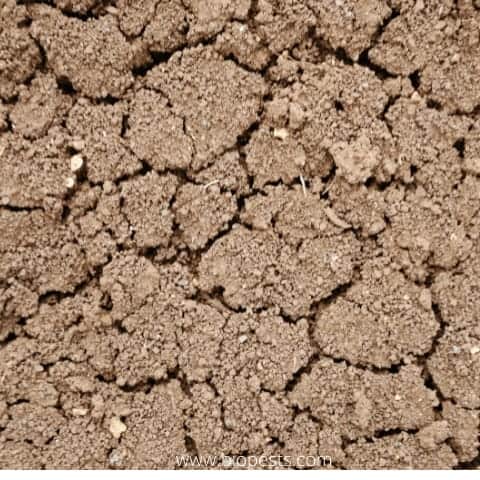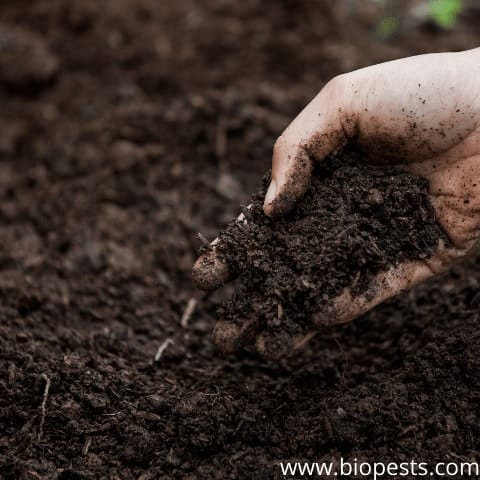When growing organic plants, it’s of critical importance that you pay attention to the products that go into the soil and also what’s present near the plants. Gypsum is a common additive in gardening, but how safe is it, and what benefits does it provide to organic gardening?
Gypsum is safe for organic gardening and is used as an effective alternative to chemicals. It can be used in the soil to combat excessive sodium or to help to break up touch and compacted soils. Gypsum is pH neutral and won’t affect soil pH, making it a great alternative to lime.
This article will take a look at whether gypsum is safe for organic gardening, its chemical makeup, and the exact benefits it provides to organic gardeners.
What Is Gypsum?
Gypsum is a naturally occurring mineral often used for construction purposes, most notably, for creating sheetrock. Some lesser-known ways to use gypsum include using it as a fluxing agent, fertilizer, and paper filler. Gypsum is regularly used throughout many industries due to its binding ability, like in toothpaste, paper, and dental molds.
Gypsum is made of calcium sulfate, chemically known as a calcium sulfate dihydrate. Calcium is the primary reason gypsum is used as a gardening supplement, though the sulfur in the mineral somewhat counters this.
How Is Gypsum Used in Organic Gardening?
Gypsum is very versatile and can be used in organic gardening to accomplish several different things with minimal risk of overuse or accidental side effects.

Counters Sodium
Firstly, gypsum can be added to soil that contains too much sodium to ‘dislodge’ the sodium and make room for other nutrients to move into the area. Too much sodium is disastrous for plants, which need a variety of nutrients to grow properly and thrive. When gypsum dislodges sodium, the sodium goes down from the roots and away from the plant, allowing other nutrients to leech into the root system.
Excessive sodium in the soil can be a problem in many areas for various reasons. Northern areas often have high sodium levels in the soil after the winter from winter salting trucks, and sodium can be used in septic systems, salt breezes from the ocean, and more.
Too much sodium can cause soil to harden, leading gardeners to think that they simply have hard soil. Even if there’s clay lumping up the soil, gypsum will also break it down. Clay lumps break down from the addition of gypsum, improving soil structure and allowing for more efficient drainage. Gravel in the soil can also help soil drainage and keep stagnant water from collecting.
When gypsum alleviates rocky soil, they think the gypsum broke down the soil and fixed their problem, when in fact, it’s countering high levels of sodium or clay. Unfortunately for would-be gardeners, this necessitates the use of an agent like gypsum to balance out the detrimental effects too much sodium has on growing plants.
Calcium Supplement
Calcium is the primary nutrient in gypsum and a big reason why people use it for gardening. Not enough calcium in the soil can cause plants to grow shallow roots, which means the plant won’t be able to absorb nutrients from the soil effectively. Roots are the most important part of a growing plant because without solid roots, the entire plant is sabotaged from the get-go.
Another problem from calcium deficiency is inadequate drainage, causing wastewater to collect near the plant. When too much stagnant water collects around the plant, it prevents the plant from absorbing new nutrients and opens up the risk of mold growth and fungal infections.
Common Myth: Raises Soil pH
Gypsum is commonly believed to raise soil pH because it contains calcium–similar to lime. Lime is often used as a primary agent to add calcium to the soil, but the chemical makeup of lime causes soil pH to rise, which can be bad for gardens with fragile pH balances.
Unlike lime, however, gypsum contains acidic sulfur that actually counters the pH-raising properties of calcium. Adding gypsum to your soil will cause calcium to raise the pH, which is then reversed by the sulfur, effectively keeping the pH at a stable level.
What this means for gardeners is gypsum does not, in fact, raise soil pH, and this should be relegated to urban legend.
Breaks Up Soil
Gypsum can also be used to break up tough soil, especially soil containing lots of clay. Lumpy clay deposits often prove to be a hazard to plants, preventing drainage and equal dispersion of nutrients throughout the growing medium. This is technically true, but not solely because of gypsum. More often, it comes down to the way the soil is treated (or not treated) in agricultural and residential settings.
The soil is commonly turned over for new crops in agricultural settings, allowing new organic matter and nutrients to disperse regularly. Whereas residential yards and lawns are rarely–if ever–turned over after homes are built. This causes the soil to compact. Unless your soil is regularly treated and turned over, it’s not worth adding gypsum to your soil, as the organic matter will just compromise any potential benefits.
For looser soil, however, it may be worth trying. When gypsum is added to soils suitable for agriculture, it improves the clay distribution within the soil, allowing roots to grow further and drain more efficiently.
Is Gypsum Safe for Organic Gardening?
When used for its specific benefits, gypsum can be a great way to improve soil quality and allow plants to grow deeper roots and drain more efficiently.
Gypsum is pH neutral and contains no artificial chemicals, meaning it doesn’t burn or kill plants. If you’re thinking of using gypsum for your garden, take the time to assess what benefits you may obtain and make your best judgment call on how much you should use. If common sense is applied, gypsum can be a great way to break up hard soil and combat excessive sodium.
Gypsum is also more efficient than lime in cases where you don’t want to affect the pH balance of the soil.
How Much Gypsum Should Be Added to Soil?
Generally, between 20-40 lbs (9.07-18.14 kg) of granular gypsum mixed into soil and water per thousand square feet (92.90 sq m) should suffice to help fix hard soil and drive away excess sodium from salt. This can be repeated multiple times a year, but two applications should be sufficient for most peoples’ needs.
Fortunately, gypsum is rather benign compared to some chemical-based additives and shouldn’t kill plants outright when used in excess. Still, as with any additive, too much gypsum can have adverse effects on soil and the plants growing in that soil.
If used in excess, gypsum will take up valuable space in the soil, driving away other nutrients plants need, like iron, magnesium, and aluminum. In this case, a severely undernourished plant could die from the use of gypsum.
Used moderately and infrequently, gypsum has very real benefits to plants that can persist for a relatively long time.
Gypsum Alternatives for Gardening
While gypsum can be effective, there are alternatives available that can help accomplish some of the same things. Natural compost, manure, organic mulch, and lawn clippings are all very cheap and readily available alternatives that can improve soil aeration, drainage and prevent soil crusting.
Lime is another alternative that produces some of the same effects of gypsum. Lime is an awesome source of calcium but is especially suitable for acidic soil. The chemical makeup of lime is basic, meaning that it can be very useful in neutralizing high pH sources in soil.
Final Thoughts
Gypsum is a great, natural method to rid your garden of excess sodium to encourage healthy root development and efficient drainage. For gardens with compacted soil or high clay levels, it can help, to an extent, break up the soil and become more suitable for plant growth.
Some of the links above are affiliate links, meaning at no additional cost to you, I will earn a commission if you click through and make a purchase.



